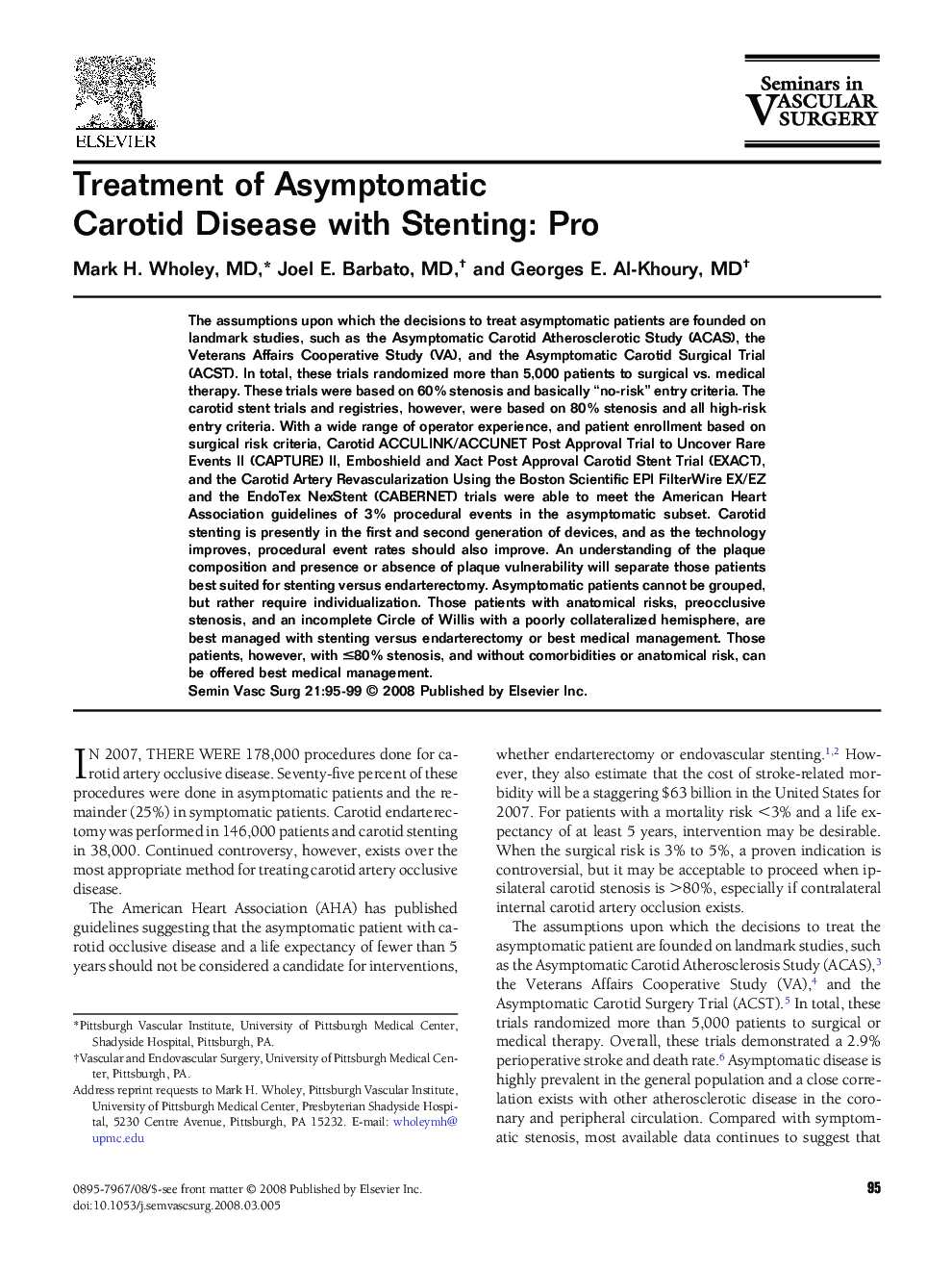| Article ID | Journal | Published Year | Pages | File Type |
|---|---|---|---|---|
| 3026303 | Seminars in Vascular Surgery | 2008 | 5 Pages |
The assumptions upon which the decisions to treat asymptomatic patients are founded on landmark studies, such as the Asymptomatic Carotid Atherosclerotic Study (ACAS), the Veterans Affairs Cooperative Study (VA), and the Asymptomatic Carotid Surgical Trial (ACST). In total, these trials randomized more than 5,000 patients to surgical vs. medical therapy. These trials were based on 60% stenosis and basically “no-risk” entry criteria. The carotid stent trials and registries, however, were based on 80% stenosis and all high-risk entry criteria. With a wide range of operator experience, and patient enrollment based on surgical risk criteria, Carotid ACCULINK/ACCUNET Post Approval Trial to Uncover Rare Events II (CAPTURE) II, Emboshield and Xact Post Approval Carotid Stent Trial (EXACT), and the Carotid Artery Revascularization Using the Boston Scientific EPI FilterWire EX/EZ and the EndoTex NexStent (CABERNET) trials were able to meet the American Heart Association guidelines of 3% procedural events in the asymptomatic subset. Carotid stenting is presently in the first and second generation of devices, and as the technology improves, procedural event rates should also improve. An understanding of the plaque composition and presence or absence of plaque vulnerability will separate those patients best suited for stenting versus endarterectomy. Asymptomatic patients cannot be grouped, but rather require individualization. Those patients with anatomical risks, preocclusive stenosis, and an incomplete Circle of Willis with a poorly collateralized hemisphere, are best managed with stenting versus endarterectomy or best medical management. Those patients, however, with ≤80% stenosis, and without comorbidities or anatomical risk, can be offered best medical management.
